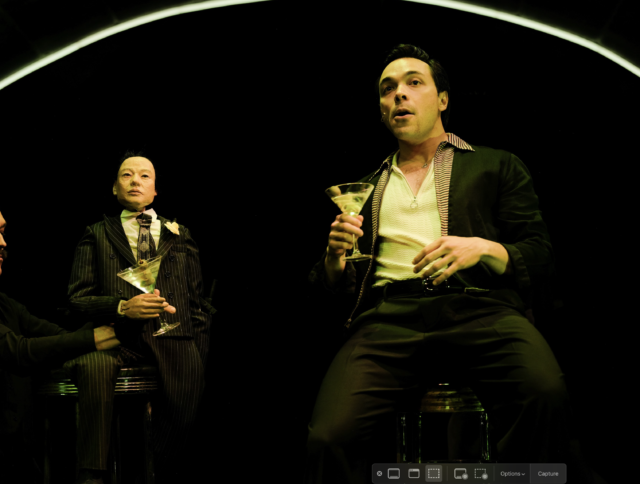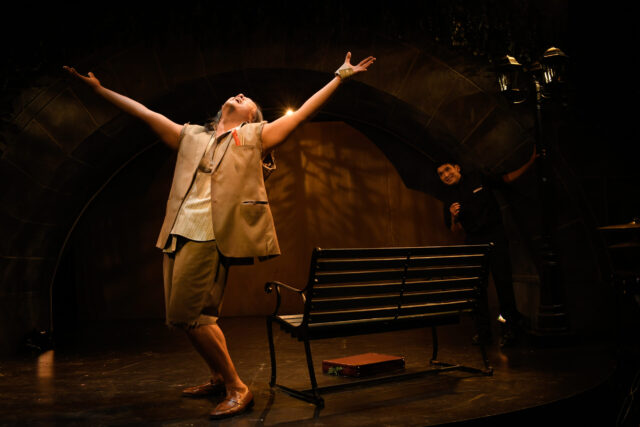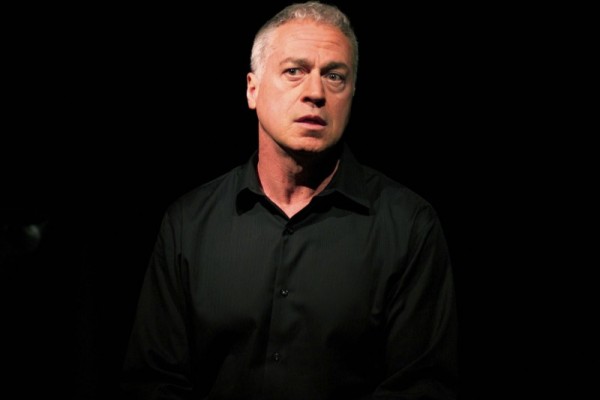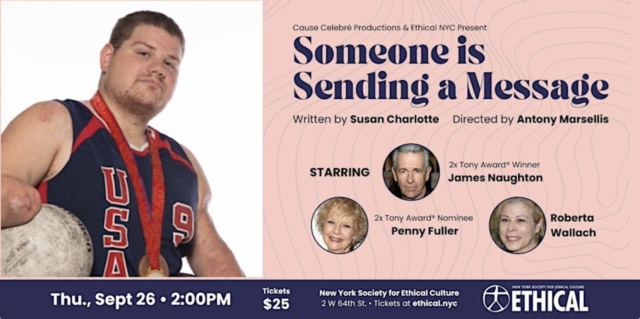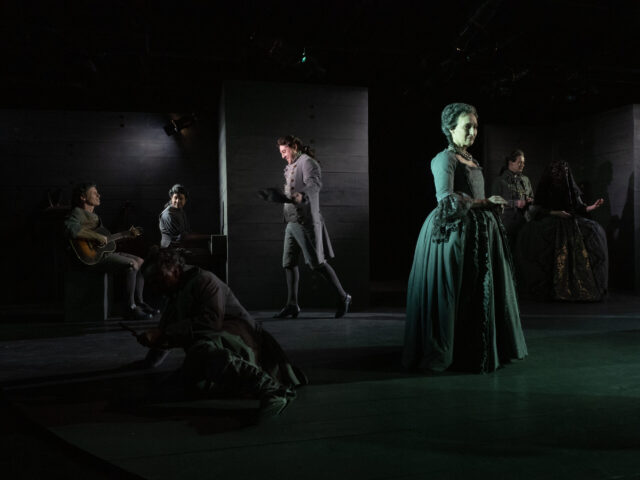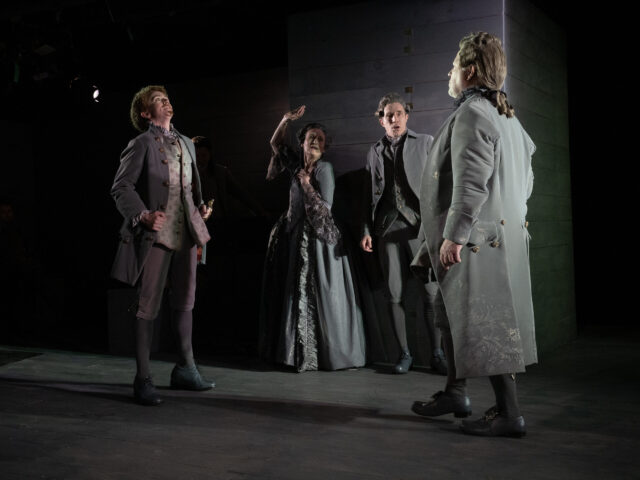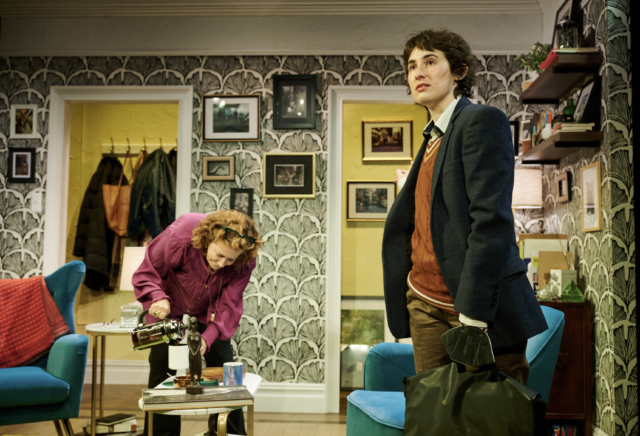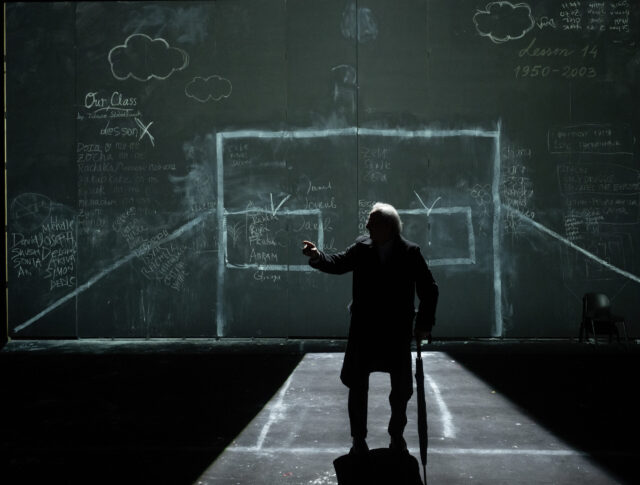
Table 17 goes back and forth in time as a couple looks at their past, present, and future (photo by Daniel J. Vasquez)
TABLE 17
Susan & Ronald Frankel Theater
Robert W. Wilson MCC Theater Space
511 West Fifty-Second St. between Tenth & Eleventh Aves.
Through September 29, $60-$150
mcctheater.org
Writer Douglas Lyons and director Zhailon Levingston have followed up their sweet and savory 2021 Broadway debut, Chicken & Biscuits, with another culinary collaboration, MCC Theater’s Table 17, although this one is more appetizer and dessert, skipping the main course.
The eighty-five-minute play was inspired by Lyons’s admiration of Black rom-coms, including Love & Basketball, How Stella Got Her Groove Back, Poetic Justice, and Love Jones; posters of various films line the hallway lobby. Each audience member gets a pseudo menu for a restaurant called Bianca’s, which has information about the show and “Today’s Special,” a message from Lyons that asks everyone to “unbutton your top button, the pants too, and let yourself be. When the characters ask you for advice, don’t be shy, talk to ’em.”
Jason Sherwood’s set features sixteen glowing white tables surrounding a round platform where another table sits under a disco ball; at the back of the stage is a long wall with compartments that can open, changing from windows to plush cushions to bars with glasses and bottles, with embedded LED and neon lighting by Ben Stanton.
The incomparable Kara Young, who has been nominated for three Tonys in successive years, 2022, 2023, and 2024, as Best Featured Actress for Clyde’s, Cost of Living, and Purlie Victorious: A Non-Confederate Romp Through the Cotton Patch, winning for the last one, stars as Jada Cory, a frantically harried young woman who enters to Chaka Khan’s “I’m Every Woman” and asks the audience whether she should change her outfit as she gets ready to meet her ex-fiancé for the first time in two years. “Him calling outta the blue caught me off guard,” she explains. “But, I know Dallas. His pride would not allow him to reach out to me unless he missed me. And I mean, why wouldn’t he?”
Playwright, filmmaker, and actor Biko Eisen-Martin (soft, 3rd and Palou) is Dallas Thompson, a would-be smooth operator who thinks he looks great in corduroy and enters to Usher’s “Nice & Slow.” “Do I miss her? I can’t say I don’t,” he says. “But, if I was saying I did, I’d wanna know she missed me first, before I admitted it. Though, this ain’t me admittin’ it — so, chill out.”
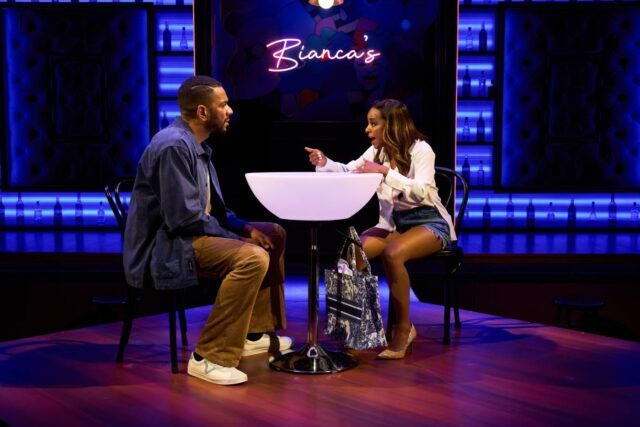
Dallas Thompson (Biko Eisen-Martin) and Jada Cory (Kara Young) rehash old times in MCC world premiere (photo by Daniel J. Vasquez)
And Michael Rishawn, who originated roles in Handjob and Ain’t No Mo’, takes on multiple roles, from snarky restaurant host River Wilks to a cocky bartender who brags about his success with women to Eric, a flight attendant colleague of Jada’s.
As Jada and Dallas play a kind of cat-and-mouse game in the present over whether they are still attracted to each other, the narrative is interrupted by flashbacks to their meet cute, blossoming romance, and eventual breakup. It’s also interrupted by River, who has to be their server as well that evening, offering such pearls of wisdom as “Life sucks, don’t it?” and, when Jada asks him to recommend a dish, “No, I work here. I don’t eat here.”
Young is a delight to watch, even when she goes over the top; she is a master of physical comedy and hilarious facial expressions. Eisen-Martin is steadfast as Dallas, who thinks he’s a lot more cool, calm, and collected than he really is. And Rishawn is a barrel of energy switching among his parts, although he too often takes things too far, the comic relief becoming too absurd.
Like so many rom-coms, Table 17 is light fare that goes down easy, a tasty eighty-five-minute morsel that doesn’t have a lot of meat on its bones but is still yummy.
[Mark Rifkin is a Brooklyn-born, Manhattan-based writer and editor; you can follow him on Substack here.]
